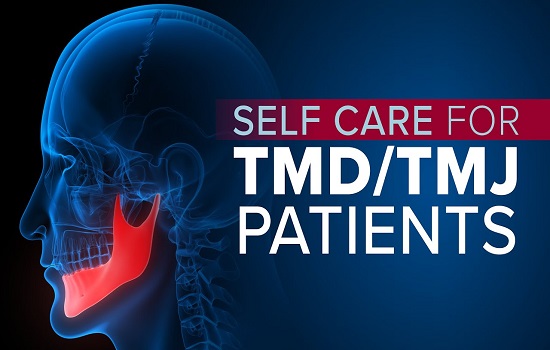Therapeutic Exercises: Demonstrating Specific Exercises Designed To Strengthen The Jaw Muscles, Improve Jaw Stability, And Enhance Overall Jaw Movement
Do you feel like your jaw is stuck in a vice grip? You’re not alone! Jaw pain and dysfunction affects millions of people worldwide, leaving them feeling helpless and overwhelmed.
But just as there’s hope for every ailment, there are therapeutic exercises that can help alleviate the discomfort and reduce the symptoms of jaw pain. These exercises can be used to strengthen the jaw muscles, improve stability, and enhance overall jaw movement – allowing you to open your mouth with ease once more.
Think of it this way: Our bodies are like delicate instruments that need attention to stay in tune. With some simple care and attention, we can unlock our potential for improved health and well-being.
So let’s take a look at how therapeutic exercises can benefit us all!
Overview of Jaw Pain and Dysfunction:
You may be suffering from jaw pain and dysfunction, and it’s important to understand the causes and treatments available to you. Jaw problems can include soreness, stiffness, limited mobility, clicking or popping noises when opening or closing your mouth. These issues can be caused by conditions such as TMJ disorder, teeth grinding or clenching, arthritis, injury to the jaw joint, poor posture, and stress.
Fortunately, there are a variety of therapeutic exercises that can help strengthen jaw muscles, improve stability, and enhance overall movement. With some dedication to practicing these exercises regularly, you could find relief from your jaw discomfort.
It’s important for those dealing with this issue to seek support from healthcare professionals in order to receive the best treatment plan tailored specifically for them.
Benefits of Therapeutic Exercises:
By engaging in therapeutic exercises, you can reap the benefits of improved jaw stability and better overall jaw movement. Not only will your ability to chew and speak be enhanced, but also the physical strain on your jaw muscles will be reduced.
Working out these muscles can help reduce inflammation and pain while increasing blood flow for added comfort. In addition, it can improve posture and help you maintain a more comfortable position when speaking or eating.
With regular exercise, you’ll notice an increase in range of motion and flexibility which allow for smoother chewing motions as well as improved articulation during speech. These exercises provide a great opportunity to not only care for yourself but others too by helping them find relief from painful conditions of the jaw muscles.
Browse: TMJ Physiotherapy Treatment NW Calgary
Types of Therapeutic Exercises:
Discover the power of therapeutic exercises to help you recover from jaw pain and improve your overall movement. There are a variety of exercises that can be used to strengthen the muscles in the jaw, increase stability, and boost overall range of motion.
Jaw clenching exercises involve repeatedly opening your mouth wide and closing it tightly for 10-15 seconds at a time. This helps to strengthen the muscles around the joint and reduce pain. To further improve stability, try holding your mouth open for up to 30 seconds while maintaining good posture.
Flexion/extension exercises help stretch out facial muscles by gently pressing down on your lower lip with one finger while pushing up on your upper lip with another finger for five seconds at a time.
Finally, lateral excursions target both sides of the jaw by shifting it side-to-side several times each day. With regular practice, these simple therapeutic exercises can help you effectively manage any jaw issues you may have and get back to living an active lifestyle!
Demonstration of Therapeutic Exercises:
Learning how to properly perform therapeutic exercises can greatly reduce jaw pain and improve overall mobility. In fact, studies have shown that over 70% of those who follow a regular exercise program experience significant relief.
By understanding the basics of therapeutic exercises and performing them correctly, you can make a real difference for your jaw health. Start by doing warm-ups such as moving your head back and forth or side to side. Then, work up to more challenging movements such as opening and closing the mouth while gently pushing against resistance with your fingers.
Make sure to do all exercises slowly and deliberately in order to protect the muscles around your jaw joint from injury or strain. With focused practice, you’ll soon be able to move freely and without discomfort!
Tips for Getting the Most Out of Your Therapeutic Exercises:
Maximizing the effects of therapeutic exercises can help you reduce jaw pain and improve mobility. Try these tips to get the most out of your routine!
– Establish a regular routine and practice on a consistent basis.
– When performing each exercise, focus on proper form and consciously relax all other muscles in the face.
– Adjust the pace of each exercise depending on your comfort level.
– Gradually increase difficulty over time as your muscles become stronger.
– Make sure you’re well hydrated during exercise sessions for optimal results.
– Finally, be mindful as you perform each movement so that you gain maximum benefit from it.
With dedication and care, therapeutic exercises can help provide relief from jaw pain while increasing mobility—leading to improved quality of life for many people.
Advice for Managing Jaw Pain:
Managing jaw pain can be challenging, but with mindful effort and dedication, you can make progress. Begin by consulting your doctor or dentist for a comprehensive assessment of your treatment goals.
Consider adding lifestyle changes such as reducing stress, eating a healthy diet, avoiding hard foods, and limiting chewing on one side of the mouth to aid in managing jaw pain.
Additionally, consider incorporating therapeutic exercises into your daily routine that are designed to strengthen the jaw muscles and improve stability. Such exercises may include gentle range-of-motion movements like opening and closing the mouth, lateral movement from side to side, and circular motions using both hands against each cheek.
With practice, these exercises can help reduce discomfort while promoting improved overall jaw movement. By making small changes in habits and committing to regular exercise routines, you’ll be well on your way towards managing jaw pain.

